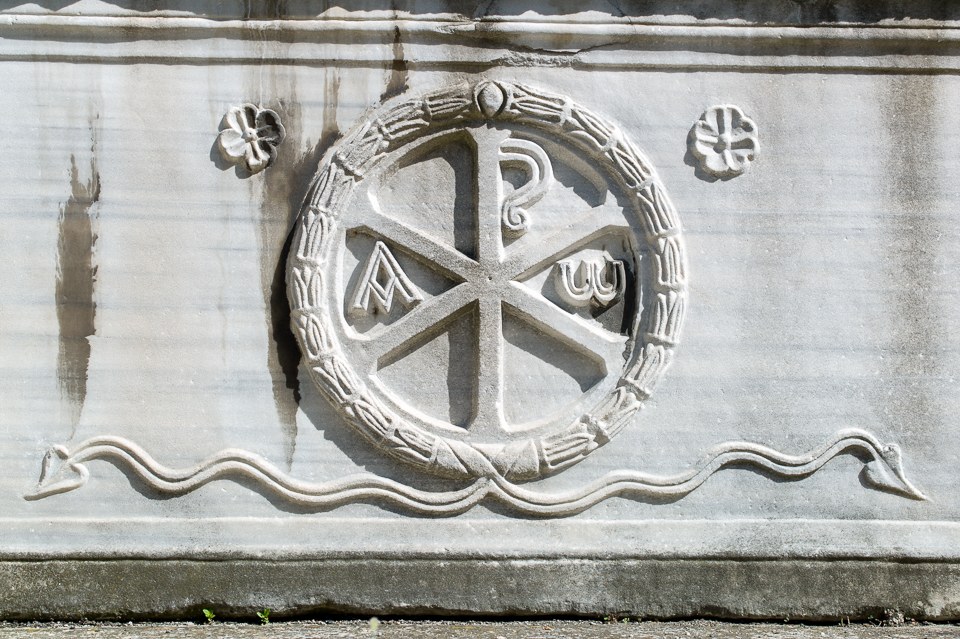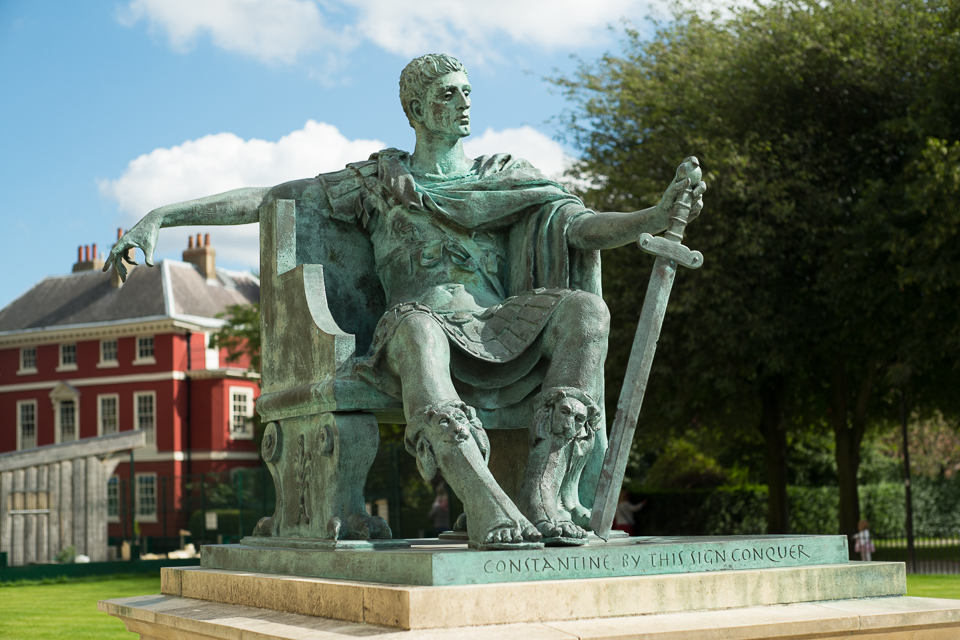This statue of the Emperor Constantine sits just outside the Minster at York. He was proclaimed Emperor here, as a result of the death of his father, the Augustus Constantius.
This caused some considerable difficulties; at the time Rome was being ruled by four emperors, Diocletian’s Tetrarchy of two senior (Augustii) and two junior (Caesars) emperors. Further, the notion of familial inheritance of the title was being discouraged. So, being the son of the senior emperor, despite what Constantine might have thought, was not considered sufficient qualification to attain the title. Constantine was initially hailed as an Augustus (a straight replacement for the position of his father). This was not how the tetrarchy was intended to work, and the Caesar (and the other emperors) were not of a mood to condone this position. Showing some willingness, perhaps for the last time, to compromise with those he would share power with, Constantine would initially settle for the official role of the western Caesar.
In the ensuing years he would eventually command the West as Augustus, and further unseat the usurper Magnentius, who was ensconced in Rome, in the battle of the Milvian Bridge. It was on the eve of this battle that he is reported to have had a dream in which he was shown the symbol of the Chi-Rho (the Christian cross comprised of the first two letters of the name “Christos”), and told to go forth and “in this sign, conquer”.
This would be one of the truly momentous events of human history, as Constantine would come to embrace Christianity, generally with the notion of “one empire (or state), one emperor, one God”, and Rome, as empire and church, would become inseparable. He would go on to defeat all other claimants to the throne, to rule the empire as a single Emperor, and found the city of Constantinople (present day Istanbul), as its new capital. And it all started here, in York.



